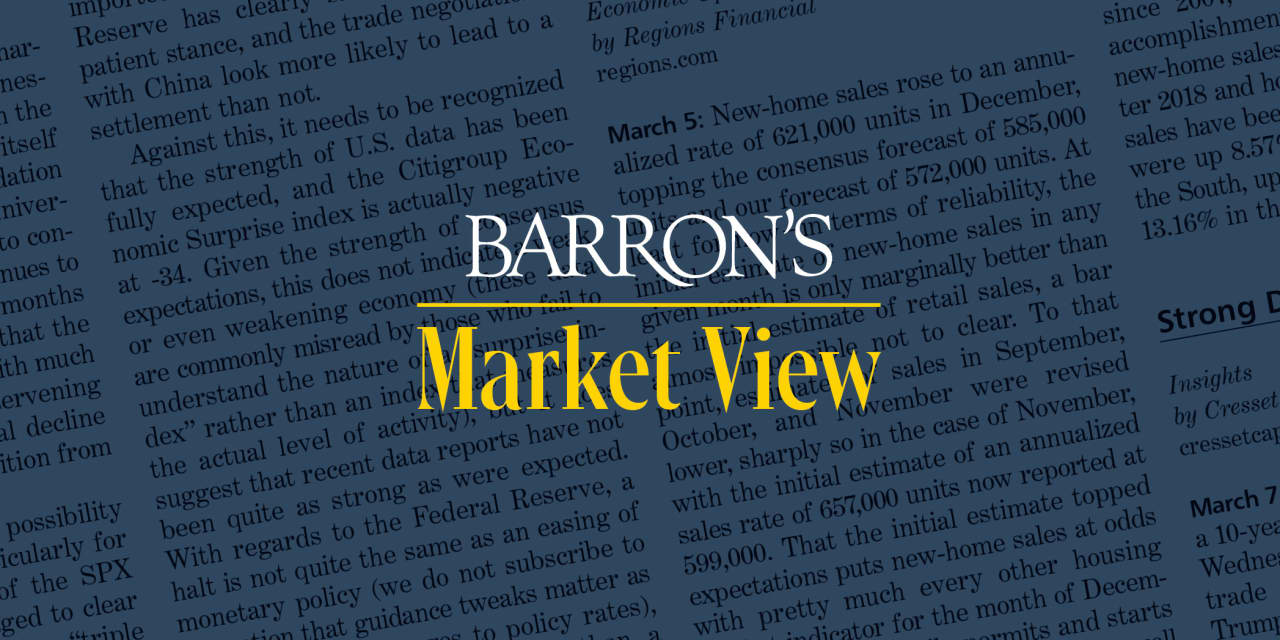This commentary was issued recently by money managers, research firms, and market newsletter writers and has been edited by Barron’s.
Economic and Financial Analysis
ING
Sept. 1: The U.S. ISM manufacturing index rose more than expected in August to stand at 47.6 versus 46.4 in July (consensus 47), but this is the tenth consecutive month it has come in below the break-even 50 level, i.e. indicating contraction.
The ISM surveys asks companies a range of questions on employment levels, orders, output, supplier delivery times, and price pressures in order to come up with a broader picture of the state of the sector rather than measuring output alone, as in the industrial production report. The output index improved to 50 from 48.3, but new orders slipped back to 46.8. Prices paid moved higher to 48.4 from 42.6 but because this is below 50 it merely means that the rate of price declines is slowing rather than that prices are moving higher.
As such, inflation pressures emanating from the manufacturing sector remain minimal and are consistent with consumer price inflation slowing closer to zero.
James Knightley
Deglobalization’s Benefits
Macro Picture
TS Lombard
Aug. 31: Gradual deglobalization has long been a part of our new macrocycle thesis. Looking through the noise and distortions of the past three years, we see broad confirmation that our thesis remains in play. Understandably, there is a great deal of concern among investors about what this means for financial markets.
Since globalization was associated with rapid improvements in efficiency, a collapse in worker power, historically high profit margins, and Goldilocks conditions for financial markets, it seems natural that deglobalization could reverse these trends.
And to the extent any reconfiguration of international trade patterns will render parts of the existing capital stock obsolete, it is obvious that deglobalization must involve a degree of wealth destruction (since equity holders have a claim on that existing capital stock).
Yet, for the broader macro economy, we think the pessimism about deglobalization is overdone. On balance, investment and GDP growth are likely to be stronger in the 2020s, while AI/robotics should help curb some of the potential inflationary consequences of domestic labor shortages and lost productivity. The prevailing tendency of interest rates and inflation is likely to be higher than in the 2010s, but there is no reason to fear persistent stagflationary outcomes.
We should also remember that deglobalization will bring new investment opportunities, particularly in commodities and for certain emerging markets. Some economies in Asia, Latin America, and Eastern Europe will be net beneficiaries.
Dario Perkins
Thaw in IPOs
Market Commentary
Cresset
Aug. 30: The tightening program started by the Fed in 2022 not only pressured stocks and bonds, but also private markets as higher interest rates raised funding costs. Deal activity dried up last year, as fundraising was the most challenging it had been at any time in the past 15 years. The number of private fund strategies launched since the start of 2023 is 53% lower, according to Preqin.
Nowhere is the funding problem more visible than in IPO activity, a long-time exit strategy for venture capital funds. Total IPO volume in the U.S. this year is just $13 billion, according to Dealogic. But two forthcoming IPOs [for Arm Holdings and Instacard] could signal a turning point for fund raising.
Shares of recent IPOs, as represented by the Renaissance IPO Index, slid more than 57% in 2022. This year, the Index is rebounding, surging nearly 50% through July before retreating to more than 30% for the year so far. This suggests the investment community, after stronger-than-expected performance so far this year, might welcome renewed IPO activity.
Jack Ablin
Window or Aisle Seat?
AM Charts
BMO Capital Markets
Aug. 30: Interesting times. Even though the Conference Board’s latest consumer confidence survey took a big hit in August (headline fell 7.9 points to a 3-month low) on the back of higher prices for groceries and gas, those concerns weren’t large enough to stop anyone from making travel plans.
In fact, 21.8% of the respondents said that they intend to venture outside of the U.S. borders in the next six months. Whether that is to the north (Canada), the south (Mexico), to the East (Asia) or to the West (Europe), well, the world is their oyster. That is the largest share since the survey began in early 1967, or when Tom Jones, The Supremes, and Sonny & Cher had songs on Billboard’s Top 10.
And the spending continues …
Jennifer Lee
AI: Priced for Perfection
Weekly Newsletter
Murphy & Sylvest
Aug. 28: Interest rates are up significantly over the past year. Earnings are down versus year-ago levels, yet the markets remain within shouting distance of all-time highs. Some of the excitement revolves around artificial intelligence (AI) and the very high technology growth rates to support AI.
The poster child for AI is
Nvidia
(ticker: NVDA), which reported huge revenue and earnings growth last week. The stock popped, then dropped back to levels of a month ago.
Expectations are high for the “new” AI-related companies; however, valuation levels for many of these companies are well above their historical norms as well. Some would argue that equities are priced for perfection and not considering an economic slowdown, or any bumps in the road. Valuations would confirm that argument, although timing that next “big” decline is impossible.
For now, the path of least resistance for stocks seems to be higher.
Paul J. Nolte
To be considered for this section, material, with the author’s name and address, should be sent to MarketWatch@barrons.com.
Read the full article here











Leave a Reply